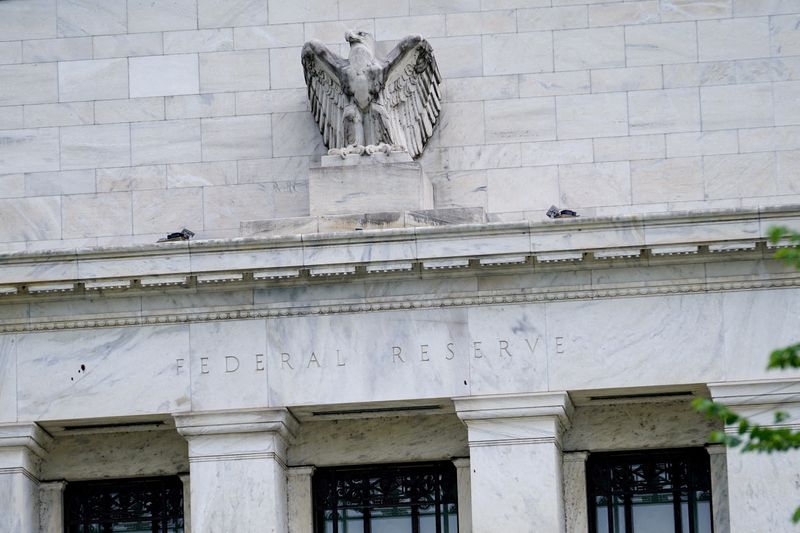By Ann Saphir
(Reuters) -A surge in U.S. job growth has financial markets betting the Federal Reserve will follow last month’s half-point interest rate reduction with smaller moves, and ignited a debate over whether the policy rate ends up at a higher level than previously expected.
A Labor Department report on Friday showed employers added 254,000 jobs in September, far more than expected, and the unemployment rate declined to 4.1%.
Within minutes, traders of futures that settle to the Fed’s policy rate had all but abandoned bets on another upsized interest rate reduction before the end of this year, and moved to price in quarter-point reductions instead.
They are also pricing in an end point to the rate-cutting at somewhere between 3.25% and 3.75% by the middle of next year, above the 3.00% to 3.25% end-point range that traders had previously seen likely. The current range is 4.75% to 5.00%.
Chicago Fed President Austan Goolsbee, in back-to-back appearances on Bloomberg TV and Yahoo! Finance shortly after the jobs report, called it “superb” and said that more such strong labor market data would give him added confidence that the U.S. is at the Fed’s goal of full employment and not headed for a crash.
Even so, he said, Fed policymakers will likely need to cut rates by “a lot” over the next 12 to 18 months to make sure the labor market stays strong and inflation continues to come in around the Fed’s 2% target, as it has in recent months.
Most Fed policymakers currently see the policy rate settling out somewhere between 2.5% and 3.5%, he said, referring to projections published last month which show a median expectation of 2.9% but a range of forecasts around that.
“You have both time and runway to figure out where the settling point is,” Goolsbee said.
If jobs numbers continue to improve along with GDP, he said, that could mean a continuation of what has been recent rapid growth in productivity.
That in turn would point to a higher end point for the Fed policy rate, and would be a “glorious” outcome because it would signal a stronger economy overall, Goolsbee said.
EXPECTATIONS
Analysts largely took the jobs report much as Goolsbee did: reason for optimism about economic growth, but without changing the need for further, albeit gradual, rate cuts ahead.
Friday’s jobs report “is a potential game changer for the Fed and market expectations on the size and pace of future rate cuts,” BMO economists wrote. “It also is a big upside risk to our consumer spending and GDP growth forecasts in the near-term.”
Expectations could still change before the Fed’s Nov. 6-7 policy meeting, which will come after fresh data on inflation and another monthly jobs report.

The Fed’s policy-setting Federal Open Market Committee has said it wants to recalibrate the policy rate as inflation drops closer to its 2% goal and the labor market cools.
Recent data showing job market cooling “had threatened to turn into something more worrisome, but after today’s report the soft landing looks back on track,” JP Morgan economist Michael Feroli wrote. “We think it would take a rather large October (or early November) surprise to move the Committee off this path of gradual rate normalization.”


